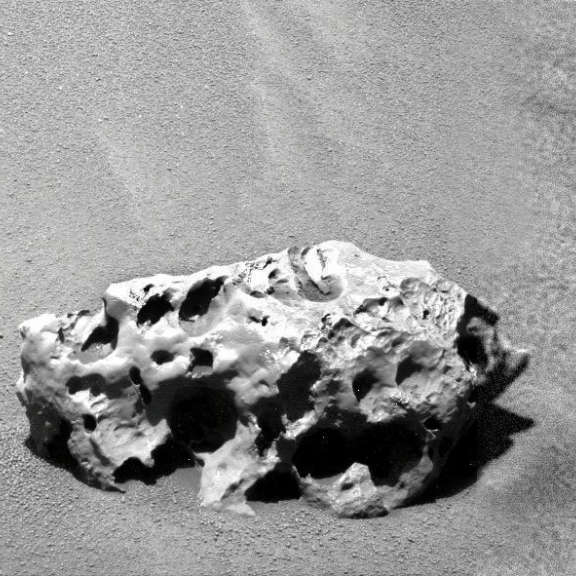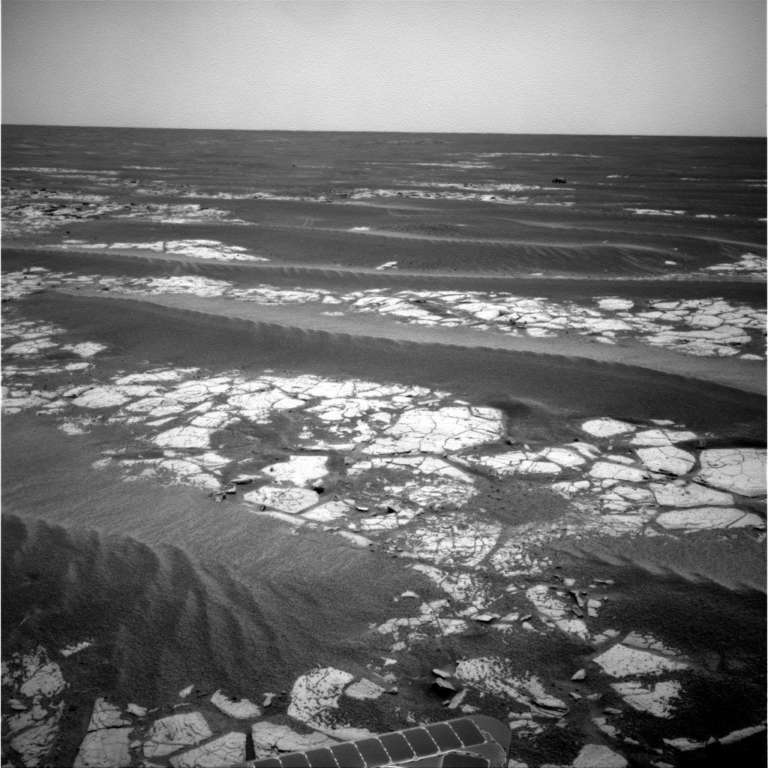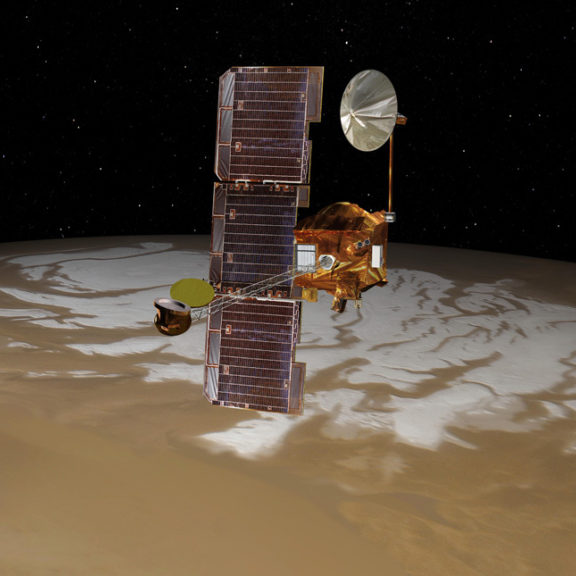All
All
Stories, updates, insights, and original analysis from The Planetary Society.
Rhea, Enceladus, Mimas, and Tethys, oh my!
With the last Titan flyby on October 12, Cassini came back to an orbit that's nearly in the equatorial plane, and immediately rewarded us with some fine views of several of the icy moons. Here are a bunch of images of those moons.
OMG! Aurora!
Unmannedspaceflight.com member Astro0 was fiddling around with an interesting-looking sequence of Cassini images when he discovered their purpose -- they were gathered in order to see if Cassini could catch aurorae flaring into being near Saturn's north pole. Cassini sure did!
LCROSS impact recap, with animations
Quite a night! I set my alarm for 3:15 am in order to get up and watch LCROSS crash into the Moon.
It would appear that Opportunity has stumbled upon another meteorite
I wonder if this came from the same original body as Block Island, or if Meridiani is the kind of slowly deflating landscape that accumulates meteorites at its surface, like the ANSMET meteorite hunting spots in Antarctica?
Opportunity on the move
Opportunity rover is driving, driving, driving. It departed the meteorite named Block Island on sol 2,004 and has routinely clocked 70 meters per driving day (with drives every other day).
Beautiful 3D animation of Spirit's environs in Gusev Crater
Doug Ellison has done it again: he's created a spectacular overflight of Gusev crater based upon digital elevation models of the terrain produced by the United States Geological Survey from HiRISE data.
Opportunity's highway, and a tour of Block Island
Just a cool image to start the morning: after a 70-meter drive yesterday, Opportunity's following not one but two sets of its own tracks.
Dust storm update: Skies clearing for Spirit
For a while, Mars was beating Spirit while she was down, throwing a dust storm at the rover where it's bogged up to its hubcaps in fluffy soil When lots of dust is lofted into the sky, the hazard is that when it comes down, it may come down on the rover and its solar panels. But it appears things on Spirit are still pretty clean.
A sunset into the dust
While Spirit has been stuck at Troy, it's been taking numerous opportunities to capture photos with dramatic twilight lighting. On sol 2,002 (three sols ago, or August 21), it gazed toward the setting Sun, snapping the shutter roughly once a minute.
A pretty new Hubble image of Mars
A set of Mars image data taken by the Hubble Space Telescope a year ago was just released to Hubble's data archive. It was captured by Hubble's Wide Field and Planetary Camera 2 on January 30, 2008 when Mars was about 115 million kilometers from Earth.
What are the rovers up to? January 2009
Spirit's been getting some nice views of the spot it spent all of 2008 in,
What do we know about Uranus' moons? Part 1
I got an urge to dive in to the Voyager image archives and see what exactly we have here on Earth to base our understanding of the Uranian moons on.
Opportunity and Spirit updates: Both are now driving
Another day, another drive: on sols 1,693 and 1,695 the Opportunity rover conducted two more lengthy drives to the south, totaling almost 200 meters. On the other side of the planet, Spirit is FINALLY in motion again.
Opportunity is really hitting the highway
Victoria crater, the site of a Mars year's worth of study, is now far over the horizon, as Opportunity has lately completed a series of very long drives. Opportunity is once again sailing the sand seas of Meridiani Planum.
Three great new pages on Don Davis' website
Don Davis is a space artist who takes the question of color in space very seriously.
Opportunity route map update
Eduardo Tesheiner was kind enough to send me an updated version of his route map for Opportunity so we can get a sense of just how close the rover is getting to Cape Verde.
Beautiful mosaic of the Voyager mountains
One of my favorite amateur image magicians, Gordan Ugarkovic continues to play around with the amazing data recently released by the Cassini mission, covering the Iapetus encounter of last September. Here's a lovely mosaic he just put together of the Voyager Mountains.
Yep, it's ice!
The Phoenix mission confirmed it this morning: the disappearing act pulled by those chunks of bright material in the Dodo trench pretty much nails the identification of the bright material as ice, which is great news for the mission. Ice is what Phoenix went all the way to Mars to study; it's what the team has been aiming for all these years.
Some beautiful video from the Spirit and Opportunity landing sites
A majority of the people who work in planetary geology are usually associated with one or maybe two missions, doing all their research on the results from one instrument on one mission. But there are a few people whose expertise cuts across many space missions, and an even smaller number of people who seem to work on almost everything. Randy Kirk is one of those people.


 Explore Worlds
Explore Worlds Find Life
Find Life Defend Earth
Defend Earth


 Sun
Sun Mercury
Mercury Venus
Venus Earth
Earth Mars
Mars Jupiter
Jupiter Saturn
Saturn Uranus
Uranus Neptune
Neptune Small Bodies
Small Bodies

















